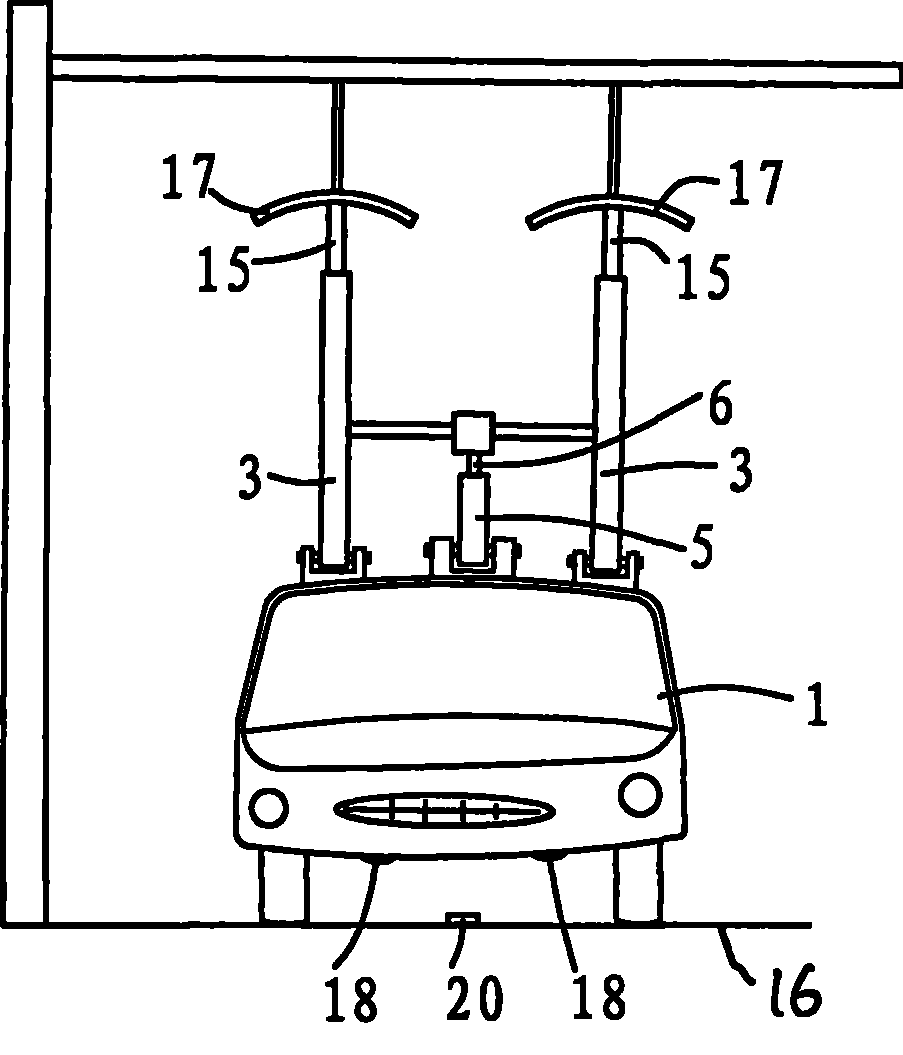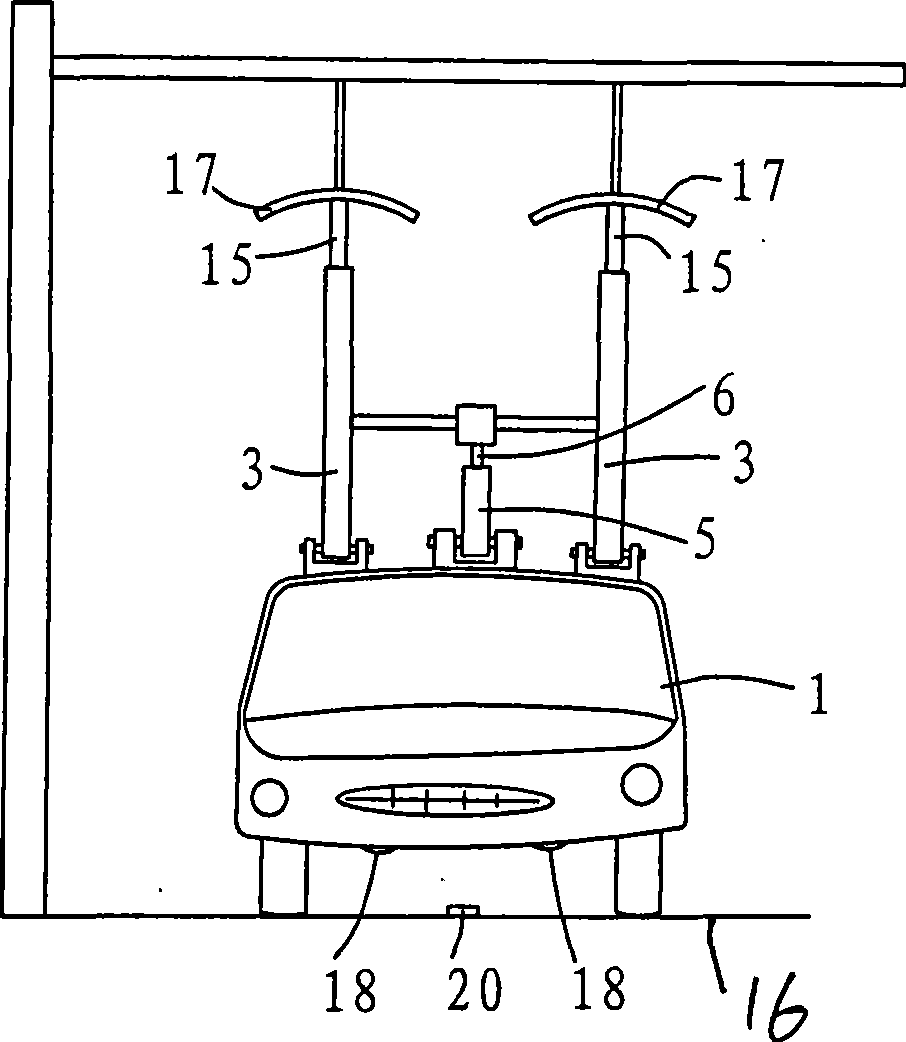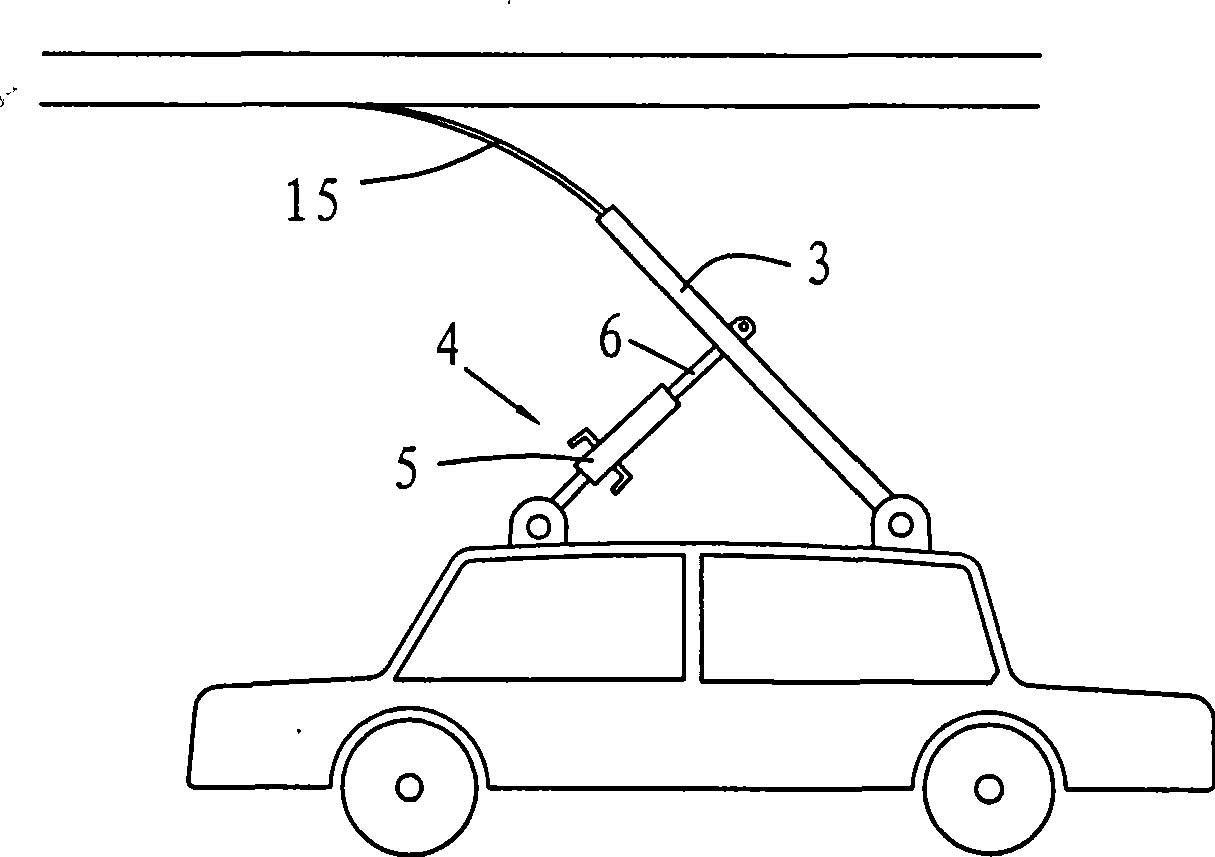Pure electric automobile
An electric vehicle and driving technology, which is applied to electric vehicles, current collectors, vehicle components, etc., can solve the problems of inability to travel for long distances, restricting the consumption of electric vehicles, and limited electric energy for battery charging. Reflects fast and improves the effect of long-distance travel
- Summary
- Abstract
- Description
- Claims
- Application Information
AI Technical Summary
Problems solved by technology
Method used
Image
Examples
Embodiment 1
[0028] Embodiment 1, with reference to Fig. 1 to Fig. 8, an electric vehicle that can be charged while driving, including a car body 1 and a storage device 2, the top of the car body 1 is provided with a guide rod 3 and a pneumatic telescopic rod 4, and the pneumatic telescopic rod 4 The rod 4 includes a bottom cover 5 and a piston 6, the bottom of the bottom cover 5 is hinged with the car body 1, the top of the piston 6 is movably connected with the guide rod 3, the bottom of the bottom cover 5 is provided with an air inlet pipe 7 and an air discharge pipe 8, and the air discharge pipe 8 is provided with a normally open solenoid valve 9, and the air inlet pipe 7 is provided with a normally closed solenoid valve 10, a pressure storage tank 11, a pressure switch 12, an air pump 13, and a one-way valve 14 in reverse order. Open, the normally open electromagnetic valve 9 is closed, the bottom cover 5 is inflated, and under the power-off state, the normally closed electromagnetic v...
Embodiment 2
[0029] Embodiment 2, with reference to Fig. 1 to Fig. 6 and Fig. 8, Fig. 9, the only difference between embodiment 2 and embodiment 1 is that the sensor is an optical solid-state image sensor 30 (CCD for short), and the optical solid-state image sensor 30 is arranged on the vehicle body 1 On the axis of the bottom, an illumination light source 31 is provided around the optical solid-state image sensor 30, and a signal line 32 sensed by the optical solid-state image sensor is arranged on the center line of the charging lane 16. The optical solid-state image sensor 30 senses the deviation of the vehicle body axis When the center line of the lane is reached, the steering wheel steering assist device 19 will correct the driving direction of the vehicle body. If the light solid-state image sensor senses that the center line deviates to a certain extent or cannot sense the center line signal because it is actively driving away from the charging lane, then Automatically start the pneu...
Embodiment 3
[0030] Embodiment 3, referring to Fig. 10, the only difference between embodiment 3 and embodiment 1 is that the hydraulic telescopic rod replaces the pneumatic telescopic rod, the hydraulic telescopic rod includes a bottom cover 40 and a piston 41, the bottom end of the bottom cover 40 is hinged with the vehicle body, and the piston 41 The top is movably connected with the guide rod 3, the bottom of the bottom sleeve 40 is provided with an oil inlet pipe 42 and an oil discharge pipe 43, the oil discharge pipe 43 is provided with a normally open solenoid valve 44, and the oil inlet pipe 42 is provided with a normally closed solenoid valve 45 and a pressure storage tank in reverse order. 46. Pressure switch 47, oil pump 48, and one-way valve 49. When the power is on, the normally closed solenoid valve 45 is opened, the normally open solenoid valve 44 is closed, the bottom cover 40 is filled with oil, and when the power is off, the normally closed solenoid valve 45 is closed. T...
PUM
 Login to View More
Login to View More Abstract
Description
Claims
Application Information
 Login to View More
Login to View More - R&D
- Intellectual Property
- Life Sciences
- Materials
- Tech Scout
- Unparalleled Data Quality
- Higher Quality Content
- 60% Fewer Hallucinations
Browse by: Latest US Patents, China's latest patents, Technical Efficacy Thesaurus, Application Domain, Technology Topic, Popular Technical Reports.
© 2025 PatSnap. All rights reserved.Legal|Privacy policy|Modern Slavery Act Transparency Statement|Sitemap|About US| Contact US: help@patsnap.com



